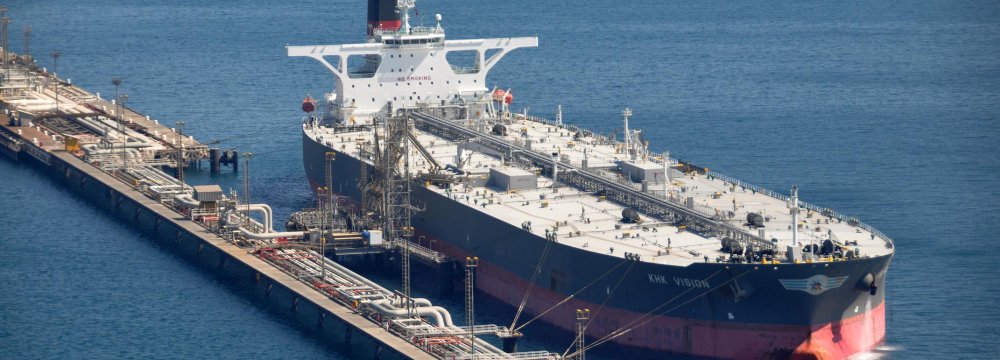
Iran's Average Oil Prices Rise $12 on Year

Iran's light crude has averaged $51.51 a barrel in the 11 months of the year, Shana said on Monday, citing a ministry report. That is 28% higher than its 2016 average of $40.12, a year that saw oil plummeting to $26, the lowest in more than a decade.
The price of Iran Heavy, one of the country's main grades for export, also rose by $12.83, or 33%, to $50.97 a barrel, the report said.
Oil has been buoyed through the year by an agreement between OPEC and some non-OPEC producers on cutting back production by 1.8 million barrels per day to restore balance to markets and boost prices.
Spearheaded by OPEC's de facto leader Saudi Arabia and the world's top producer Russia, the deal was initially intended for six months, but it was once extended by March 2018 and later to the end of next year.
The accord has propelled international benchmark Brent and the US West Texas Intermediate Crude to their highest levels since the middle of 2015.
Under the scheme, Iran is expected to pump around 3.8 million barrels a day. The country is producing around the same level, according to government figures and data provided by OPEC's secondary sources monitoring the production of the group's member states.
Prices have also drawn support from political tensions in the Middle East and supply disruptions in Iraq, the United States and elsewhere.
The extension of supply cuts last month is sending a strong signal that the oil market rebalancing could speed up.
A group of 30 experts and economists surveyed by Reuters last week forecast Brent crude to average $58.84 a barrel next year, compared to an outlook of $55.71 per barrel for 2018 in the previous Reuters poll conducted at the end of October.


Trump weighs using $2 billion in CHIPS Act funding for critical minerals

Codelco cuts 2025 copper forecast after El Teniente mine collapse

Electra converts debt, launches $30M raise to jumpstart stalled cobalt refinery

Barrick’s Reko Diq in line for $410M ADB backing

Abcourt readies Sleeping Giant mill to pour first gold since 2014

Nevada army depot to serve as base for first US strategic minerals stockpile

SQM boosts lithium supply plans as prices flick higher

Viridis unveils 200Mt initial reserve for Brazil rare earth project

Tailings could meet much of US critical mineral demand – study

Kyrgyzstan kicks off underground gold mining at Kumtor

Kyrgyzstan kicks off underground gold mining at Kumtor

KoBold Metals granted lithium exploration rights in Congo

Freeport Indonesia to wrap up Gresik plant repairs by early September

Energy Fuels soars on Vulcan Elements partnership

Northern Dynasty sticks to proposal in battle to lift Pebble mine veto

Giustra-backed mining firm teams up with informal miners in Colombia

Critical Metals signs agreement to supply rare earth to US government-funded facility

China extends rare earth controls to imported material

Galan Lithium proceeds with $13M financing for Argentina project

Kyrgyzstan kicks off underground gold mining at Kumtor

Freeport Indonesia to wrap up Gresik plant repairs by early September

Energy Fuels soars on Vulcan Elements partnership

Northern Dynasty sticks to proposal in battle to lift Pebble mine veto

Giustra-backed mining firm teams up with informal miners in Colombia

Critical Metals signs agreement to supply rare earth to US government-funded facility

China extends rare earth controls to imported material

Galan Lithium proceeds with $13M financing for Argentina project

Silver price touches $39 as market weighs rate cut outlook

















